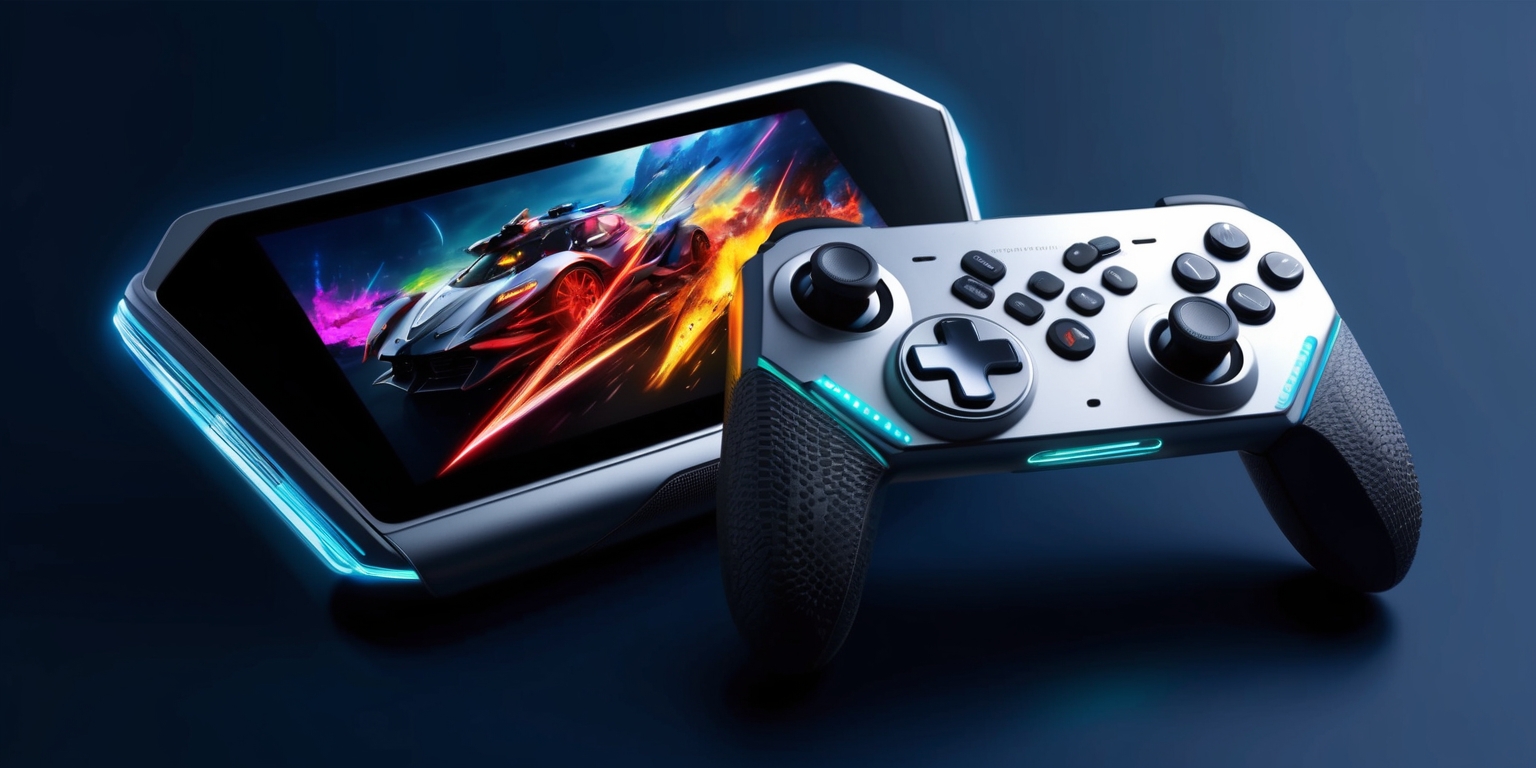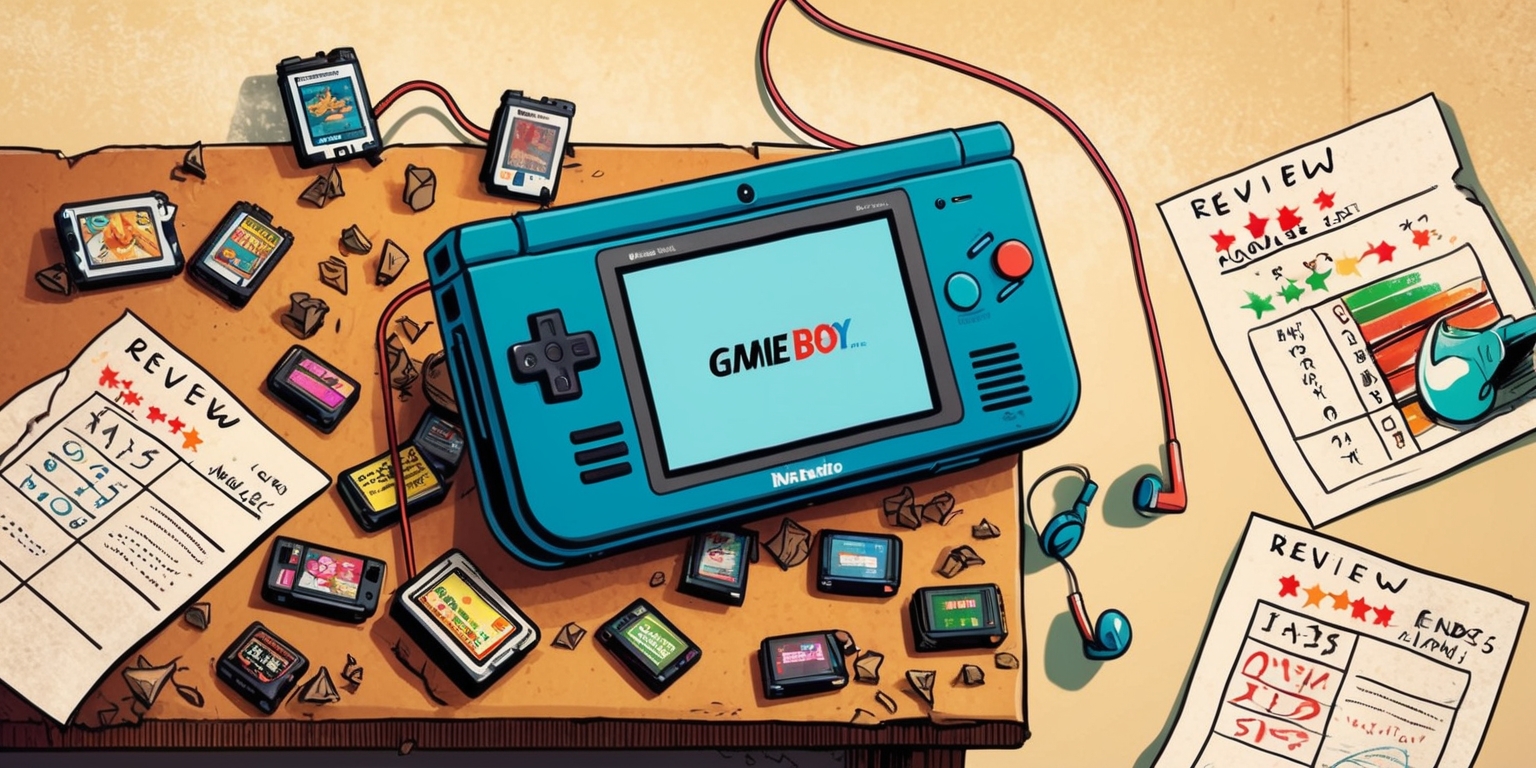Revolutionizing Portable Gaming: Harnessing Battery Life and Performance in Next-Gen Handhelds
- Apr 09, 2025

The landscape of portable gaming is taking an exciting turn with the evolution of Nintendo’s hardware. The emergence of their newest handheld device brings not only enhanced graphical and processing capabilities but also sparks curiosity regarding battery performance. Gaming aficionados and tech buffs are keen to delve deeper how the next-generation system handles extended play sessions and high-demand gaming experiences, particularly in portable mode. As we look into the design and function of the device, its technical advantages and overall power delivery take center stage, merging playful innovation with practical engineering solutions. Exploring these facets provides insight into the seamless fusion of modern technology with handheld accessibility.
Enhanced Hardware and Expanded Battery Capacity
Nintendo’s newest console integrates refined hardware, boasting a more robust processor and an upgraded battery design that promises a significant improvement in power delivery. Central to this innovation is a battery with a capacity of 5220 mAh, a notable step up compared to its predecessor’s 4310 mAh. This larger battery is engineered to handle the increased processing demands, but the power consumption naturally scales with the performance enhancements. As a result, the device supports higher framerates and more dynamic rendering options, ensuring complex gaming experiences can be enjoyed with improved safety margins. Fans can expect an intricate balance between cutting-edge gaming performance and battery longevity, where internal modifications help accommodate various play styles, whether for short bursts or extended sessions in handheld mode.
Battery Longevity in Handheld Mode
When it comes to battery life during on-the-go gaming, the system shows a versatile range from approximately 2 to 6.5 hours, contingent on the game and operational mode selected. Handheld mode introduces unique power challenges as display brightness, processor activity, and additional features such as enhanced multimedia functions come into play. While casual titles may permit prolonged playtime, more intensive games or applications that activate the console’s detailed graphics and audio systems tend to consume power at a faster clip. Game developers have optimized many titles to balance performance and power consumption, resulting in disparate battery drain rates across various gaming genres. Ultimately, this flexibility in battery longevity underscores the importance of efficient battery management tailored to user habits and game complexity.
Influence of Game Complexity on Energy Consumption
The energy drawn from the battery fluctuates noticeably depending on the game’s inherent demands. Titles with detailed textures, expansive worlds, and enriched soundtracks They require increased computational capacity, which ultimately leads to… in faster battery depletion. For instance, engaging with immersive adventures or action-packed titles considerably taxes the console’s resources, while simpler, narrative-driven games manage a more economical energy draw. This disparity means users experience variable battery performance—the more intensive and visually demanding the game, the shorter the session before recharging is necessary. Additionally, certain gaming modes, such as using advanced control methods or integrating live communication features, further impact the power reserves. The console’s design, smartly incorporating power optimization strategies, strives to balance these performance necessities with the practical need for enduring battery life.
Comparative Insights: New Generation Versus Legacy Systems

Reviewing the evolution from the original device to this new iteration highlights both design advancements and battery performance considerations. The previous model, whether in standard configuration or its OLED variant, was lauded for its battery efficiency and dependable longevity. However, with the introduction of increased processing prowess and added features, the current system experiences a marginally faster drain despite housing an expanded battery. This nuance in design suggests that while improvements in internal hardware provide richer gaming experiences, they also come at a cost to power endurance under heavy loads. The correlation between hardware upgrades and battery consumption presents an intricate balance that manufacturers continuously strive to perfect, ensuring that innovation does not drastically compromise the core convenience of handheld play.
Variable Power Consumption Explained Through Feature Integration
The newer device integrates several modern features that influence its energy requirements. One significant addition is the Mouse Mode, which is designed for flexible gameplay and improved ergonomic control. While this feature enhances the gameplay experience and diversifies control methods, it introduces supplementary power demand during operation. Similarly, higher framerate options and augmented display brightness, both designed to enhance visual fidelity, contribute to varying degrees of energy usage. These functionalities are carefully calibrated to ensure a trade-off between an immersive, high-quality experience and ensuring that the battery sustains play for a reasonable duration. By fine-tuning performance modes and dynamic power settings, the console mediates between state-of-the-art capabilities and practical battery management goals for the user.
Influence of Interactive Communication on Battery Life
Features such as game chat and in-console communication with options to integrate camera functions lend a social dimension to gaming, but they also influence battery longevity. When interactive sharing or streaming functionalities are active, additional system components are simultaneously engaged, thus drawing more power. The interactivity aspects transform a handheld device into a dynamic hub of connectivity, where every function, from real-time messaging to voice and video interactions, runs parallel with active gameplay. This multitasking environment mandates that power consumption appreciably increases. During periods of reduced external connectivity, or when the device is operated in offline modes, power draw is significantly minimized, ensuring longer play sessions. The design reflects a clear understanding that modern gaming involves layered use cases where connectivity and performance must coexist harmoniously.
Direct Comparison with the Companion Handheld on the PC Platform
When juxtaposed with a prominent competitor in the gaming handheld market, the power dynamics reveal intriguing distinctions. The PC-based gaming platform under review features different models with varied battery performances stretching from 2 to 9 hours on a standard model and extending to 3-12 hours on an enhanced version. This range, while impressive, highlights how tailored power management in each design caters to the unique gaming demands of each system’s ecosystem. Although the console in question may have a slightly lower battery endurance on average, it benefits from technologies specifically optimized for its gaming library and integrated control methods. The power consumption can be optimized further by adjusting processor limits and setting tailored graphics adjustments, offering users flexibility comparable to that available on other sophisticated gaming devices.
Charging Dynamics, Efficiency, and User Experience
Understanding how efficiently the device recharges is integral to overall user satisfaction. Official sources suggest the The system is capable of reaching a complete charge in around… 3 hours when using the manufacturer’s recommended cables and docking accessories. This certification implies a robust charging mechanism designed both for speedy energy restoration and for preserving the lifespan of the lithium-ion battery. Charging while in sleep mode optimizes the process further, ensuring that the battery is replenished with minimal thermal stress. While charging times might vary with alternative accessories or if the console remains active during recharge, the expectation is clear—rapid and efficient energy replenishment designed to support the spontaneous gameplay habits of users. This efficiency in recharging serves as a counterbalance to the faster consumption rates under high-performance operation.
Strategies to Optimize Battery Performance
To ensure extended battery life, several practical methods may be implemented that align with best practices observed in earlier iterations. Adjusting screen brightness is one immediate solution, as lower light levels significantly reduce power draw without a substantial compromise on clarity in many lighting situations. Users may also benefit by choosing offline gameplay modes or enabling airplane mode during sessions that do not rely on real-time connectivity. Additionally, reducing resolution and capping framerates in selected games can conserve battery, extending play sessions even during long journeys. These approaches allow the dynamic features of the device to be enjoyed while mitigating the impact on energy consumption. Equally, system settings are designed to offer an array of power-saving options, ensuring that battery performance can be tailored to individual gaming styles and situational needs.
Hardware Optimization and Adaptive Performance Modes
At the core of the console’s design lies a commitment to adaptive performance, tailor-made to optimize resource allocation during diverse gameplay scenarios. Advanced power management algorithms adjust system performance based on game demand, integrating hardware facets like CPU, GPU, and display configurations into a unified response mechanism. With adjustable framerates and resolution scaling, this adaptive performance mode not only maximizes the device’s graphical potential but also safeguards against unnecessary power drain. These intelligent solutions dynamically balance robust performance with energy conservation, ensuring that switchbacks between demanding and less intensive tasks are handled seamlessly. Such an integrated system underscores the dedication to innovation without sacrificing practical play duration, reflecting a holistic approach to addressing modern gaming expectations.
Advanced In-Game Functionalities and Their Effect on Energy Consumption
The design philosophy behind the new console incorporates a range of advanced in-game functionalities that push the envelope of interactive gaming. From the implementation of enhanced multiplayer frameworks to experimental features like motion-sensitive controllers and augmented reality effects in select titles, each addition carries its own implications for battery usage. The incorporation of these functionalities means users can interact in multifaceted ways, enriching the experience while maintaining the core claim of portability and responsiveness. Although such features demand additional energy, the system compensates with innovative power-saving measures when they are not in full use, such as entering low-power standby states or optimizing background processes. This balance of immersive capabilities with energy-efficient engineering is a nod to modern design principles aimed at long, versatile play sessions.
Emerging Testing Methodologies and Anticipated Real-World Performance
Looking ahead, the performance of the new handheld in everyday scenarios will be informed by comprehensive testing under various conditions that mimic actual usage patterns. Early measurements and official guidelines offer benchmarks – such as a full charge time of roughly 3 hours and an operational span ranging between 2 and 6.5 hours depending on the intensity of the session. However, real-world play often diverges from controlled testing environments, where differences in game selection, interactive features, and environmental conditions contribute to a dynamic energy profile. Future hands-on reviews and diverse user experiences are expected to shine further light on how the console manages power in less predictable settings. The methodologies employed during these tests are designed to capture the full spectrum of use, providing a robust, comprehensive understanding of battery performance in everyday gaming.
Latest Articles
-
![Navigating Danger: The Tactical Quest for the Key in Arc Raiders]()
- Dec 08, 2025
-
![11 bit studios' December Showcase: New Content and Surprises Unveiled]()
- Dec 08, 2025
-
![Apple TV Drama Series Set for April 2026 Return with James Marsden Joining the Cast]()
- Dec 08, 2025
-
![Mystical Journeys: Embracing the Seasonal Magic of Disney Dreamlight Valley]()
- Nov 22, 2025











